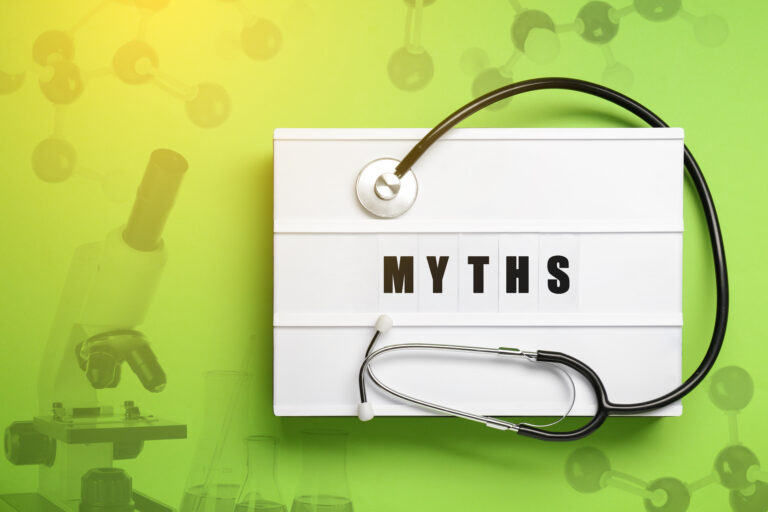Personalized Nutrition: The End of the One-Diet-Fits-All Era
Personalized Nutrition evolved as a new trend for offering nutrition and dietary recommendations based on the individual’s genetic makeup, an area propelled by the breakthroughs in the multi-omic sciences over the past hundred years. It aims not only to adjust the recommended daily intakes of nutrients and functional foods that a person should consume but also to sustain an approach that incorporates sustainability and environmental friendliness. In healthcare, this principle means initiating policies to support abandoning the general one-diet-fits-all approach and recognizing individualized diets as a friend in the war against chronic conditions that are linked to diets. This paper puts forth the possible advantages that such a paradigm could bring to the Latin American region, particularly Mexico, where genetic admixture of its population, food biodiversity, and food culture offer significant opportunities for developing personalized nutrigenetic strategies in the prevention of chronic diseases. Challenges are also discussed about getting such a proposed method implemented in other countries within the region.
1. Getting Started
A rapidly emerging field in nutritional science is Genomic Nutrition, or Nutritional Genomics, with an infusion of multi-omic analyses. This primarily includes two sub-disciplines, Nutrigenomics and Nutrigenetics, which describe bidirectional interactions between genes on the one hand and diet (nutrients) and resulting health outcomes on the other hand. In more detail, nutrigenetics defines how a particular polymorphism (allele/genotype) or genetic profile determines the metabolic response elicited by foods (nutrients). On the other hand, nutrigenomics describes an effect of nutrients and bioactive compounds from food on gene expression at the levels of transcriptomics, proteomics, and metabolomics-nutri-geno separately from inherited genotype. In their turn Nutri-epigenetics and Nutri-metagenomics are new directions that extend knowledge about modulation of gene expression at chromatin level and signaling crosstalk between gut microbiota as our “second genome” and its host’s organs/tissues. Physical activity, psychosocial context (stress, emotions), and contaminants are other interacting environmental factors. It is on this that the scientific basis rests for designing dietary interventions to be more effective when considering genetic diversity and gut microbiota as well as lifestyle in creating personalized nutrition strategies that fit the uniqueness of an individual.
Two connected matters have been elicited by the research of Nutritional Genomics and its practical implementation in personalized nutrition. There is considerable anticipation pertaining to the accurate prediction of nutritional recommendations from individual genetic profiles, which may result in better health outcomes. Furthermore, when we acquire knowledge about the genomic landscape that contributes to the risk of a particular population developing a chronic disease, we can take precautionary measures to avoid it rather than just treat it afterward. The development of personal nutrition based on multi-omic data has intensified a great deal of discussion among healthcare professionals related to how this data should be interpreted and complied with various ethical and privacy-related aspects. Major controversies led towards somewhat formalized standardization, regulation, and codes of conduct in optimizing nutrient care. Though those are very important to best practice professionalism in the clinic, they fall outside this perspective. However, it would be wrong to say that personalized nutrition-appropriate food for everyone is not a prevailing trend in our society ( 17, 18) which will eventually lead to the demise of the so common universal approach of the “one-diet-fits-all era”.
Here discusses its logic and the impacts of applying nutritional personalisation in Latin America, especially Mexico. The different genetic backgrounds of the people who consume an immense variety of foods with diverse cultural traditions offer a possibility for designing regionalized nutri-genomic approaches to replace the “one-diet-fits-all” approach with which chronic diseases are addressed.
2 Evolution of the Human Diet and Mismatch Between Genes and Nutrients
Nutrient-gene interactions are very dynamic. There have been major evolutionary alterations of the manner in which humans derive nutrients from the environment and how the needs are regulated by genes, Differences in dietary patterns across various regions over time have been significant. Presently, many societies are in the middle of pre and post globalization movements. It has brought negative impacts on both quality and quantity of food as well as more chronic diseases because there is more processing and accessibility to food. Similarly, Homo sapiens went through diverse evolutionary adaptation phases due to variant environments and selective pressures. In different environments, the modern human genome was shaped such that there were multiple locally positively selected gene variations based on nutrient availability. Though these were helpful in one context, they turn into problems when the nutritional environment changes as is happening now with the epidemiological transition. There has been massive change in certain lifestyle factors whereby people do not engage in physical activity, higher levels of stress, and other environmental pollutant factors are causing an evolutionary mismatch hence chronic illnesses.
From a nutritional view, some societies say that the diet they keep is historically traditional whereas others have adopted either an imported traditional diet or a more modern diet. Unfortunately, this does not mean to say that our state of health is better than it was in the days of our forefathers or even better than it was some generations ago. The prevalence of chronic diseases related to obesity has increased all over the world among people belonging to every economic class. This has risen particularly in children, adolescents, and adults living in cities where ultra-processed food increased with the acculturation process.
Meanwhile, sustaining or recovering Indigenous food knowledge and the violation of cultural traditional food practices at different parts of the world offers a positive impact on socio-cultural well-being with a great probability of reducing chronic diseases being developed. The composition of traditional diets refers to that dominant diet consumed for many generations whereby natural staple foods share more significant content, representing earlier stages of food evolution before industrialization. Personalized nutrition should emphasize the reintegration of those main staple foods which have been influences on human DNA in previous times. These are not universal foods; they differ mostly by geography, the population’s ethnicity, and cultural practices.
Personalized Nutrition: Stopping Diet-Related Chronic Illness
It was in the pre-genomics era that Dr. Richard O. Brennan coined the term nutrigenetics back in 1977. He had used it to express a theory that diet could cure hypoglycemia, which had a genetic disposition toward its development ( 32). In addition, single-gene newborns who have inherited inborn errors of metabolism and diseases need individual nutritional support to combat these conditions from infancy ( 33). However, what has given rise to an explosion of personalized nutrition as is understood today took place during the post-genomic period ( 6). The Human Genome Project gained great interest once it became known that the vast majority of common chronic disease phenotypes arise from a complex interaction between multiple genetic variations-single nucleotide polymorphisms (SNPs), number copy variations, insertion-deletion polymorphisms-and environmental factors such as diet, nutrients, and bioactive compounds (34, 35). The Human Microbiome Project then came into existence to share information, resources, and findings that tie together human-microbiome interactions with health-related outcomes (36).
Personalized nutrition or precision nutrition multi-omic technologies have ultimately led healthcare strategies to evolve toward the understanding of individuals as unique and the need for tailored dietary recommendations. However, it should never lose sight of a basic principle. Personalized nutrition must take into consideration the manner in which the diseases it seeks to prevent occur; that is molded by the genetic and cultural factors of a given population it targets. Therefore, not only the ‘risk alleles’ inheritance matters but also traditions and history (food culture) that formed that genome, so diets shouldn’t be recommended arbitrarily. The design of personalized nutrition plans is and will be complicated, though possible because scientific research is increasing together with societal acceptance and political support, health, and economic policies.
4 The One-Diet-Fits-All Saga
Good nutrition is fundamental in sustaining a healthy lifestyle across all stages of human development ( 41). Preventing chronic diseases is crucial because life expectancy has increased, and living disease-free enhances the quality of the aging process ( 42–44). In the past,…






